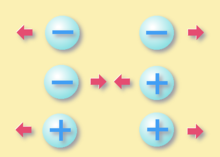 The geometric figure is a set whose components turn out to be points (one of the fundamental entities of geometry), while Geometry is the discipline that will deal with its detailed study, of its main characteristics: its shape, its extension, its properties and their relative position.
The geometric figure is a set whose components turn out to be points (one of the fundamental entities of geometry), while Geometry is the discipline that will deal with its detailed study, of its main characteristics: its shape, its extension, its properties and their relative position.
The geometric figure is defined as a non-empty set that is composed of points and understood as a geometric place is an area closed by lines or surfaces, either in a plane or in space.
A geometric figure is a nonempty set whose elements are points. These figures understood as geometric places are areas closed by lines or surfaces in a plane or in space. Now, although mathematics and geometry especially study these figures with predilection and are objects of study of these disciplines, their knowledge in art will also be required since it is essential to have basic knowledge about them to be able to describe with expertise a work of art, plan it or develop technical drawing.
With the sole fact of observing nature, the world that surrounds us, we can confirm the existence and presence of the most varied forms in the material bodies that coexist in the aforementioned nature and then, it is from these that we are forming the idea volume, area, line and point.
The different types of needs that man has been facing over the years have caused him to think and study different techniques that allow him, for example, to build, move or measure and in this way he became man in the use of the various geometric figures.
Elementary geometric figures
The most elementary geometric figures turn out to be the following: the plane, the point, the lineAs a result of the transformations and displacements of their components, they produce different volumes, surfaces and lines that are definitely the object of study of Geometry, topology and mathematics, among others.
The aforementioned figures according to the function they present are classified into five types: A dimensional, point; One-dimensional, the line (ray and segment) and the curve; Two-dimensional, the plane, delimiting surfaces (the polygon, the triangle and the quadrilateral), the conic section includes ellipses, circles, parabola and hyperbola, describing surfaces (ruled surface and surface of revolution; Three-dimensional, we find those that delimit volumes, the polyhedron and those that instead describe volumes, solid of revolution, cylinder, sphere and cone; and the N-Dimensional, like the polytope.
For example, the quadrilateral and the triangle turn out to be solid geometric figures that delimit volumes.
Triangle and square, geometric figures par excellence
The triangle is one of the most recognized and popular geometric figures. Basically it is a polygon made up of three sides. The aforementioned figure of the triangle is achieved from the union of three lines that will intersect at three non-aligned points, meanwhile, each of these points where it is possible for the lines to join are called vertices and the segments that are make up will be called sides.
There are several ways to classify this geometric figure, by the amplitude of its angles (rectangle, acute and obtuse), by the length of its sides (equilateral, isosceles, scalene).
For its part, the square is another of the geometric figures par excellence. It is a polygon composed of four equal and parallel sides and its angles all measure 90 °, these being its salient and defining characteristics.









